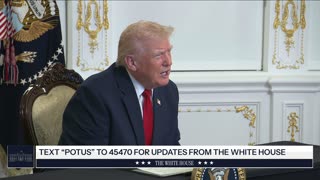Premium Only Content

Grenada Revolution: Threat Of A Bad Example!
On this day, October 25, 1983, the United States and several Caribbean allies invaded Grenada, ending one of the Caribbean’s most promising socialist revolutions.
Just four years earlier, the New JEWEL Movement, led by Maurice Rupert Bishop, had overthrown the corrupt U.S.-backed dictatorship of Eric Gairy in a bloodless coup. Bishop’s People’s Revolutionary Government launched ambitious programs in education, healthcare, and agriculture, dramatically reducing unemployment and illiteracy while inspiring liberation movements across the Global South.
Grenada’s success and its close relationship with Cuba alarmed Washington. According to Bernard Coard in The Grenada Revolution: What Really Happened, both Bishop’s faction and Coard’s own group were infiltrated by the CIA, which worked to sow division and turn comrades—and even close friends—against one another. The resulting internal conflict led to Bishop’s assassination on October 19, 1983, creating the perfect pretext for the United States to invade just days later.
The invasion left hundreds dead and crushed a bold experiment in people-centred governance and Caribbean sovereignty. Yet, more than four decades later, Bishop’s vision of an independent, united, and socialist Caribbean continues to inspire movements for justice around the world.
In this video, Bishop offers a glimpse into why the U.S. was determined to destroy Grenada’s revolution. It was Black-led, English-speaking, and capable of inspiring 40 million Africans in America to rise up against their oppressive regime.
-
 LIVE
LIVE
The Quartering
9 hours agoThanksgiving Day Yule Log!
2,290 watching -
 15:32
15:32
IsaacButterfield
17 hours ago $0.31 earnedAussie Reacts To UNHINGED Woke TikToks!
8331 -
 LIVE
LIVE
PandaSub2000
10 hours agoLIVE 6:30pm ET | NINTENDO PLATFORMERS Thanksgiving Special
254 watching -
 1:03:06
1:03:06
MetatronGaming
23 hours agoThis is the scariest game ever (for an Italian)
8.59K1 -
 1:09:35
1:09:35
The White House
4 hours agoPresident Trump Participates in a Call with Service Members
24K43 -
 LIVE
LIVE
a12cat34dog
3 hours agoHAPPY THANKSGIVING - I APPRECIATE YOU ALL SO MUCH {18+}
112 watching -
 24:55
24:55
Jasmin Laine
1 day agoCarney BRAGS About ‘Investment’—Poilievre Drops a FACT That Stops the Room
20.2K20 -
 2:14:15
2:14:15
SIM_N_SHIFT GAMING
2 hours ago $0.29 earnedGRAND THEFT AUTO WITH FRIENDS
9.18K -
 6:43:27
6:43:27
VikingNilsen
12 hours ago🔴LIVE - VIKINGNILSEN - THE NEW PRELUDE - SOULFRAME
9.06K -
 7:45
7:45
Colion Noir
1 day agoThey Made Glock “Unconvertible” To Please Politicians, Guess What The Internet Did?
13.7K23